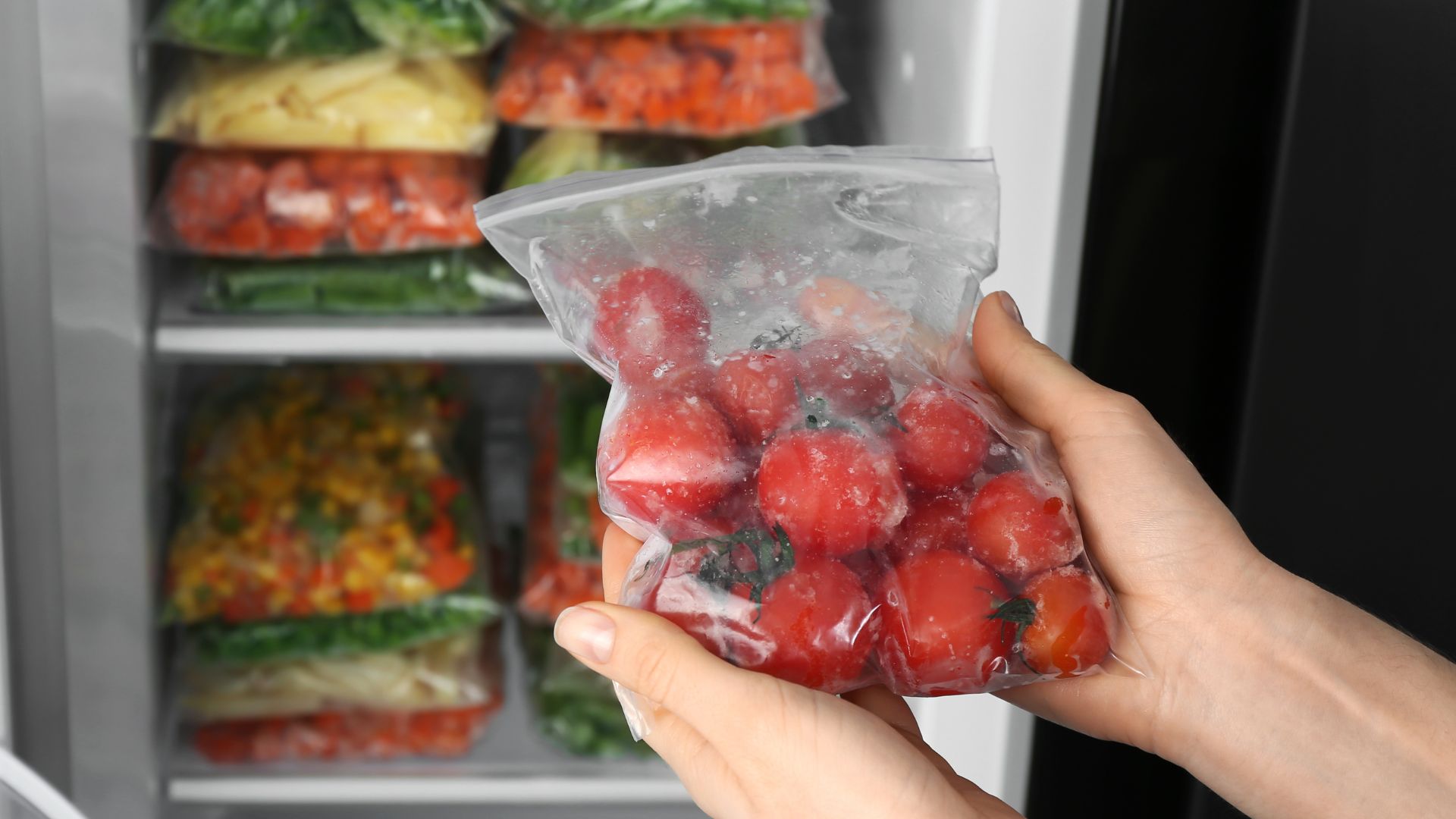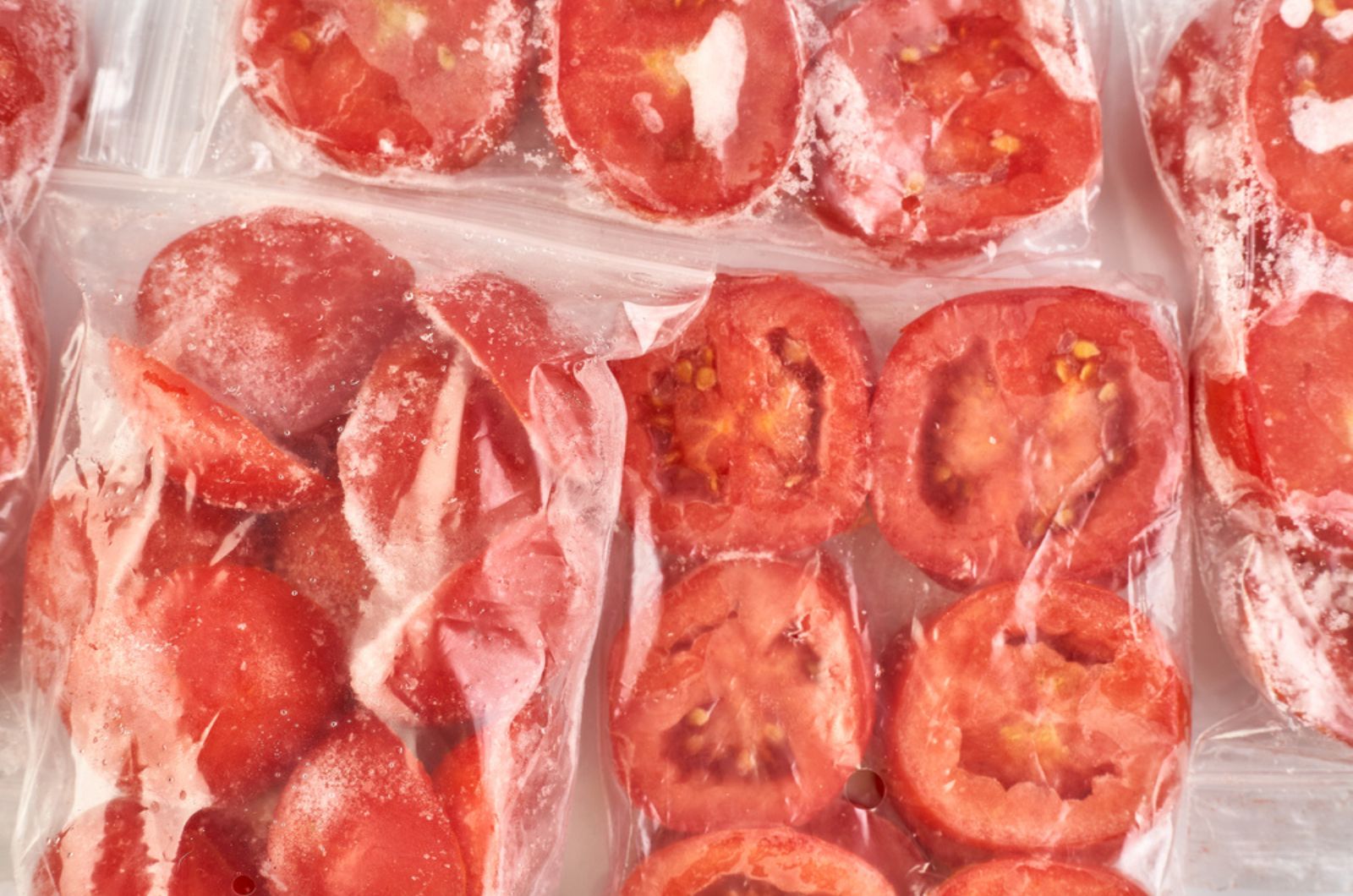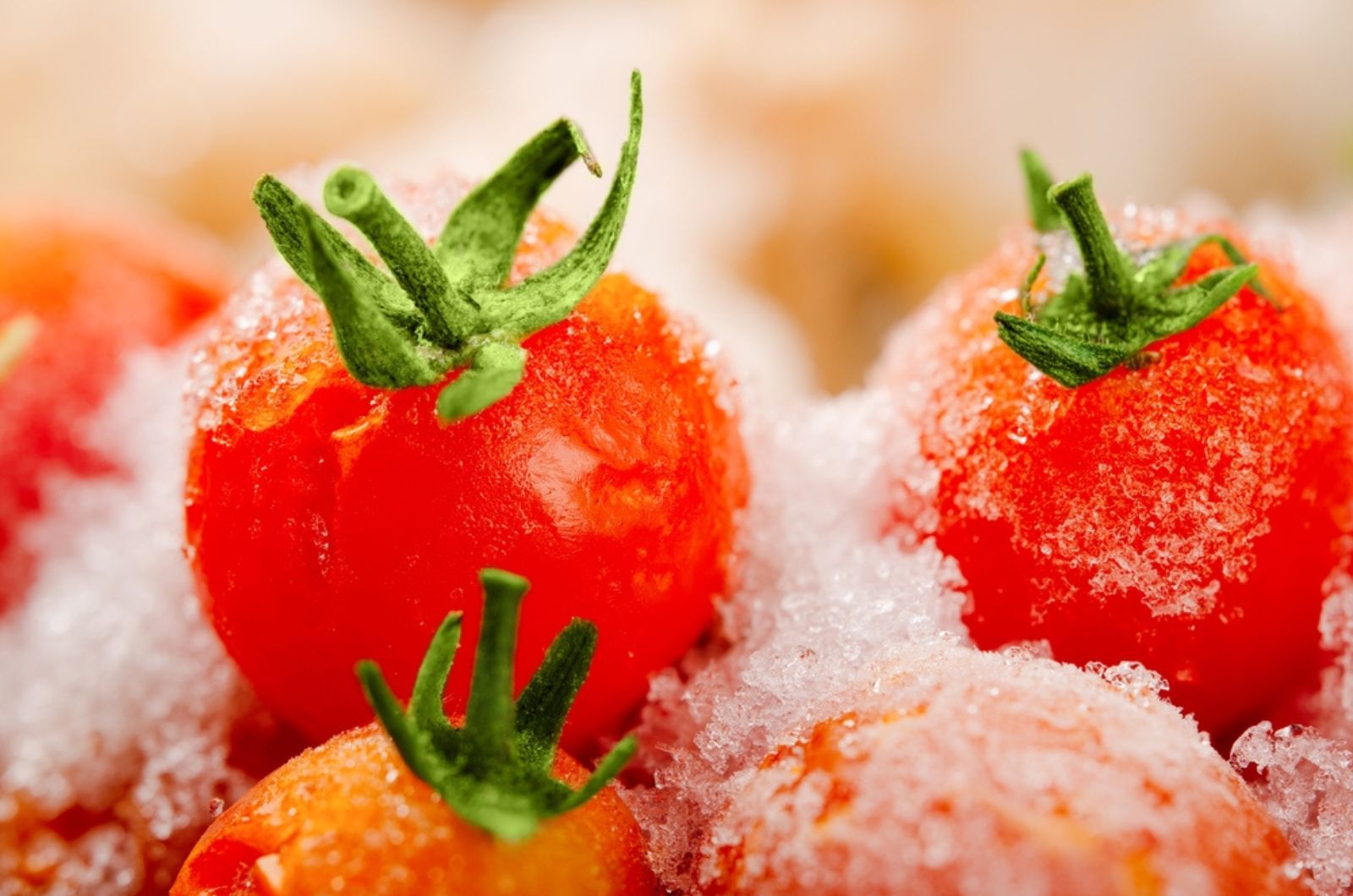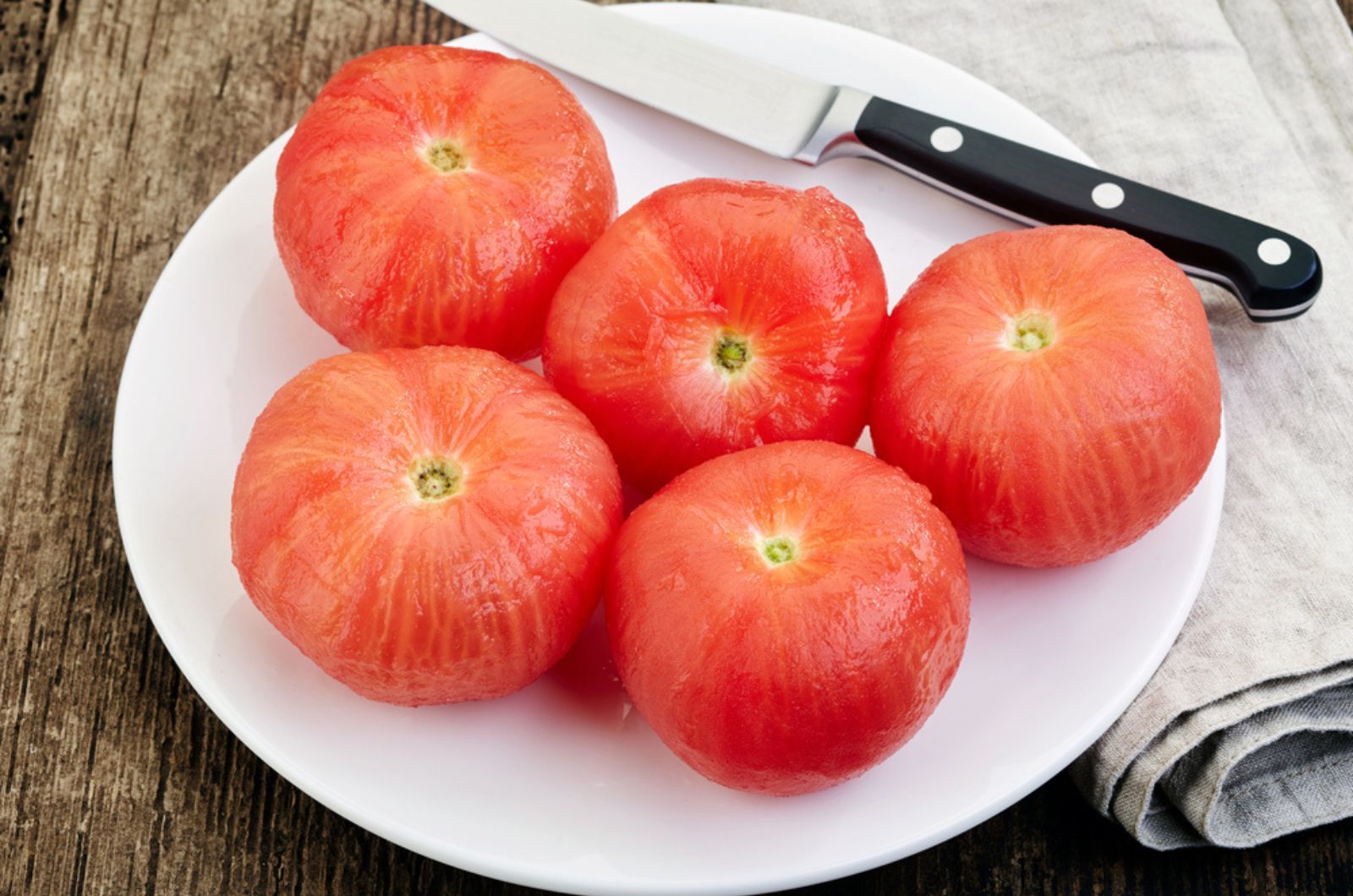Nothing can compare to freshly-picked juicy tomatoes. Many think it’s not possible to preserve that flavor for long.
Well, if you store them correctly, you can enjoy the taste all year. Freezing tomatoes is actually the easiest and best way to store these delicious veggies without affecting their flavor and nutritional value.
Let’s see how to do it in a few easy steps!
Freezing Tomatoes Without Blanching
Blanching and peeling tomatoes may take a lot of time. The great news is that you can still have flavorful and nutritious tomatoes even if you don’t take these two steps.
The first thing you need to do is select ripe and firm tomatoes. Do not use fruits with any cuts or blemishes unless you blanch them first.
Next, cut off the stems and wash the fruits thoroughly and make sure there isn’t any dirt left.
Dry the fruits well with a paper towel and put them on a kitchen towel. Take a ziplock bag and fill it with clean and dry tomatoes, but don’t put too many in a single bag.
I highly recommend writing the date on the label because you should use frozen tomatoes within a year.
Place the ziplock bags with tomatoes in the freezer, and that’s it!
More Tips For Freezing
If you grow tomatoes in your garden and want to freeze them, don’t harvest them until they’re fully ripe. Overripe tomatoes or ones with cuts should be consumed immediately after the harvest or go through a blanching process first.
This refers to all varieties, from sour to the sweetest tomatoes.
After you put the fruits in the ziplock bag, don’t seal them right away but rather try to remove as much of the air as possible. This is the best way to avoid freezer burn, which changes the structure and flavor of the tomatoes.
How To Use Frozen Tomatoes
We all know how to use freshly-picked juicy tomatoes but what should we do if they’re frozen?
Here are my recommendations.
1. Add frozen fruits to soups, sauces, and stews. In this case, defrosting isn’t necessary because the fruits will thaw and cook along with the other ingredients.
2. Grate your frozen tomatoes into various dips. Before grating, run them under warm water for a couple of seconds to allow the skin to loosen a little bit. Continue grating the same way you would if they were fresh.
3. Thaw and purée frozen tomatoes in a blender until smooth and then add them into a sauce.
4. Make a smoothie combining frozen tomatoes with other types of fruits or ingredients you typically use.
5. Make a salad with tomatoes but make sure to thaw and dry them first. They tend to get mushy in these salads but the flavor is still great.
Blanching And Freezing
If you have some slightly damaged tomatoes and you can’t eat them all, you can freeze them but they do need blanching. This may be time-consuming compared to the method above but it’s worth it.
First, wash the fruits thoroughly and remove the damaged parts. Add water to a large pot and bring it to a rolling boil; in the meantime, prepare a bowl and fill it with ice cubes and water.
Leave your tomatoes in boiling water for a minute to blanch. As soon as you take them out, put them in the bowl and let them cool off. Then carefully peel off the skin, cut each fruit in half, and put them on a baking tray (line the tray with some parchment paper).
Put the baking tray in the freezer for approximately 2-3 hours and then place your tomatoes in a freezer-safe container. Again, write the date on the label and consume within a year.
This is also a common technique for removing lectins from tomatoes.
Follow our guidelines and enjoy your tomatoes all year long!




